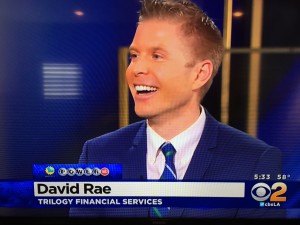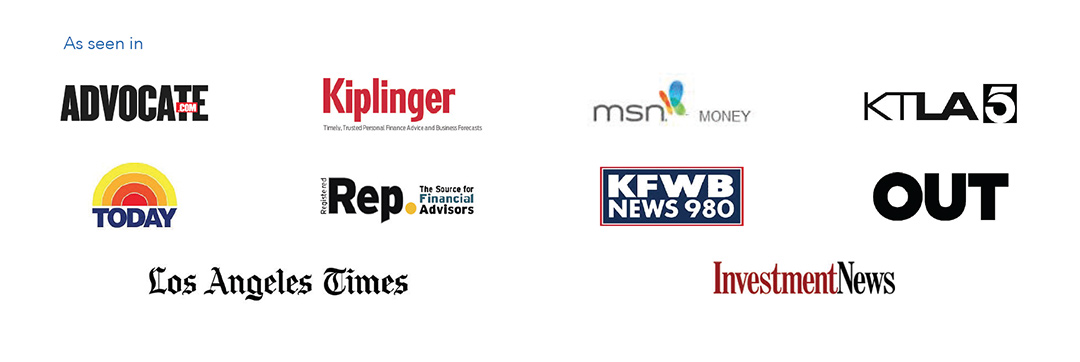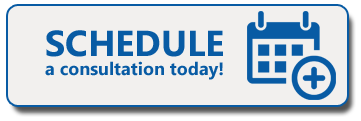
RMD Tips to help maximize your Retirement Savings. Putting Your Required Minimum Distributions to Good Use and Making the Most of Your RMD’s.
Update: Required Minimum Distributions are back in 2021. They were not required in 2020, in part because of the COVID Recession.
By David Rae Certified Financial Planner™, Accredited Investment Fiduciary™
Seventy may be the new 40, but try telling that to the IRS. As older Baby Boomers are entering their 70s, they’re nearing the legal requirement (that now kick in at age 72 to be exact) to start taking their Requited Minimum Distributions (RMDs) from their retirement accounts. Many scrupulous savers dread these withdrawals because they are taxable distributions that can drive up their tax bills. Hopefully, these RMD Tips can help you maximize your Retirement Savings.
If you are already taking out more than the RMDs from your accounts, the below RMD Tips probably don’t apply to you.
But, if you don’t need to use your funds right now and can hang in a bit longer, there are some sound strategies available to put the money to good use. (via RMD Tips)
Let’s look at the questions I hear most frequently from my pushing-70 Baby Boom clients about their RMDs:
Question 1: “Can I convert my RMD to a ROTH IRA?”
If only. This is a fairly common question, but sadly the answer is no. Under current tax laws, there is no way to rollover your RMD into a ROTH IRA.
But despair not, all is not lost. RMD Tip: If the money is not needed now, you can still potentially do a ROTH conversion on your remaining IRA funds, and use the RMD to help pay some or all of the taxes that would be due. Converting your IRA to a ROTH IRA is a taxable event, so you will pay taxes on all of the IRA money you are converting to a ROTH IRA. The benefit lies in the fact that you don’t have to take RMDs from a ROTH IRA, and the money can continue to grow in tax-free, and if you end up needing the money later it can also be withdrawn tax-free.
Hypothetical Case Study, RMD Tips Part I:
Sebastian, age 72, has $822,000 in his IRA and is now being forced to take an RMD in the amount of $30,000. That amount is determined according to IRS calculations and, again, cannot be rolled over or converted into a ROTH IRA.
Sebastian will owe taxes on any money he takes out of his IRA, in this case, $30,000. But, there is no restriction on what he does with this money, it’s his at this point. Since Sebastian doesn’t need the withdrawn money to live on, he wants to put it to good use and converting part of his remaining IRA into a ROTH IRA is an excellent option. Any money converted to a ROTH IRA would no longer be subject to RMDs during his lifetime, and it will also help lower any future RMDs that he is forced to take from any money he ends up leaving in his IRA.
In this scenario, I would likely figure out how much of his IRA we could convert to a ROTH IRA and then use the $30,000 RMD to cover the taxes due. This exact amount would depend on what other income he has as well as his overall tax bracket.
One last thought, if on the off chance he qualifies Sebastian could use his RMD to fund his own ROTH IRA. To qualify Sebastian would have to be working, and his income from work must not exceed the ROTH IRA contribution limits that year. This is currently $140,000 for singles, and $208,000 for spouses filing jointly for 2021. And while there are age limits for traditional IRA’s, there are no such restrictions for Roth IRAs.
Question 2: “Can I gift my RMD away?”
Sure. The money is yours, you can do whatever you want with it. But since you said ‘GIFT’ I’m assuming you are looking for a way to give away the money in a tax-advantaged manner.
If you convert to a ROTH IRA as mentioned above, you can consider passing along some assets to an heir in the form of an outright gift while you are still living (and can reap the benefits of your heirs’ gratitude at your largesse.)
Or you could gift your RMD to children or grandchildren to help fund to their own retirement accounts, or to offset taxation of their own ROTH IRA conversions. This idea really has legs for people who want to pass assets to loved ones. They may be in a lower tax bracket than you are, and we can assume they have a longer time frame for investing than you do, hence there is potential for them to create even more tax-free wealth. They will not be forced to take RMDs from their own ROTH IRAs as they would if they happened to inherit the ROTH IRA of someone else.
Question 3: “Can RMDs fund life insurance?”
Absolutely. Assuming you are in good health, funding life insurance with an RMD can be another way to build tax-free wealth or to pass assets to another generation. For more specific on cash value life insurance check out my previous article “3 Ways to Cash in on Insurance for Retirement” . If you choose the right policy, life insurance can do double or even triple duty.
- It can function as a “Rich People’s ROTH” – with a cash balance that will grow and can be taken out tax-free if handled properly.
- Many policies today come with coverage for serious life events like terminal illnesses, chronic illnesses, critical Illnesses, long term care, or even critical injuries.
- There is also a death benefit for when you pass away. No fun for you, true, but could be a nice financial payday for your heirs.
Question 4: “Can my RMDs fund my long term care (LTC) insurance?”
Sometimes. The permanent life insurance policy I mentioned above can include a long term care benefit or rider which can potentially help protect the rest of your lifetime’s savings, and free you up to spend a bit more of your retirement assets know you have coverage for LTC. If you die quietly at home (Note to self: This is how I want to go on my own luxury bedding) the insurance company will provide a highly leveraged tax-free death benefit to your heirs. On the other hand, if you do need LTC care, you will get the benefits provided in the long term care benefits.
To learn how to pay less for LTC, see my article “How to buy long term care coverage”
Question 4: “How do charitable donations figure into the RMD Tips picture?”
One more option for those who are feeling generous is to donate your RMD to charity. The Qualified Charitable Distribution (QCD) has been made permanent. If you happen to give to charity regularly anyway, using the QCD provision just makes it a tad bit more efficient. Generally, your tax cost is lower for you, and the charitable organization still gets the funds.
Hypothetical Case Study, RMD Tips Part II:
If our friend Sebastian normally gives $30,000 per year to his beloved charities, he would be in better shape tax-wise if he uses the QCD to transfer the $30,000 directly to the charity from his IRA. The great thing about this is the QCD eliminates the need to actually take the RMD, and therefore Sebastian doesn’t have to declare the $30,000 of income on his respective tax returns. Depending on his other assets and income this can help him keep more of the various tax deductions and exemptions that may be phased out for higher earners.
These are just a few RMD tips for those facing the big seven-o-and-a-half; a qualified Fiduciary Certified Financial Planner can give you many more. You’ll find that when it comes to RMDs, a little strategy can make a large impact on your bottom line. Even if you don’t look like you’re a day over 41.

I hope you enjoyed these RMD Tips Until Next time Be Fiscally Fabulous, and remember your money matters.
DAVID RAE, CFP®, AIF® is a Los Angeles Wealth Manager with DRM Wealth Management. He has been helping friends of the LGBT community reach their financial goals for over a decade. As a regular contributor to The Advocate Magazine and active Huff Po blogger, he is an in-demand guest for TV, radio, and podcast news shows. Follow him on Facebook, or via his website www.davidraefp.com

The opinions voiced in this article are for general information only and do not constitute an endorsement by DRM. They are not intended to provide specific investment advice or recommendations for any individual. To determine which investments may be appropriate for you, consult your financial professional. Please remember that investment decisions should be based on an individual’s goals, time horizon, and tolerance for risk. To qualify for the tax-free penalty-free withdrawal of earnings, a ROTH IRA must be in place for at least five tax years. The distribution must take place after age 59 ½ or due to death, disability, or a first time home purchase (up to $ 10,000-lifetime maximum). Before taking any specific action, be sure to consult with your tax professional. “RMD Tips: Maximize your Retirement Savings” Copyright 2021










[…] is a tax-saving strategy you can use even if you don’t plan to itemize. If you are subject to Required Minimum Distributions (RMDs), you can send funds directly from your retirement account to a non-profit or charity. Unfortunately, you can’t make this distribution directly to a […]
[…] a tax-saving strategy you can use even if you don’t plan to itemize. If you are subject to Required Minimum Distributions (RMDs), you can send funds directly from your retirement account to a non-profit or charity. Unfortunately, you can’t make this distribution directly to a […]
[…] of your inheritance and minimize taxes, you must know the various dates and deadlines to follow. Required minimum distributions (RMDs) from the account will be required by December 31st of the year after the IRA or 401(k) owner passes […]
[…] of your inheritance and minimize taxes, you must know the various dates and deadlines to follow. Required minimum distributions (RMDs) from the account will be required by December 31st of the year after the IRA or 401(k) owner passes […]
[…] Related: RMD Tips to Maximize Your Retirement Income […]
[…] Related: RMD Tips to Maximize Your Retirement Income […]
[…] Once you reach 70 ½ years or older you will be forced to take money out of your retirement accounts. Consider making a charity donation directly from your IRA. You are allowed to donate up to $100,000 per year this way. […]
[…] Once you reach 72 years or older, you will be forced to take money out of your retirement accounts. Consider making a charitable donation from your IRA. You are allowed to donate up to $100,000, per year, this way. […]
[…] Once you reach 72 years or older, you will be forced to take money out of your retirement accounts. Consider making a charitable donation from your IRA. You are allowed to donate up to $100,000, per year, this way. […]
[…] After you attain 72 decades or older, you will be compelled to consider cash out of your retirement …. Consider producing a charitable donation from your IRA. You are permitted to donate up to $100,000, for each calendar year, this way. […]
[…] of where you are in the calendar year, required minimum distributions (RMD) can never be rolled over. It is common for people to make this 401(k)-rollover mistake. In the […]
[…] of where you are in the calendar year, required minimum distributions (RMD) can never be rolled over. It is common for people to make this 401(k)-rollover mistake. In the […]
[…] of where you are in the calendar year, required minimum distributions (RMD) can never be rolled over. It is common for people to make this 401(k)-rollover mistake. In the […]
[…] 2. Required Minimum Distributions (RMDs) […]
[…] 2. Required Minimum Distributions (RMDs) […]
[…] some point, you will be forced to begin making withdrawals. These are called required minimum distributions (RMDs), which now kick in at age 72. People who are still working at age 72 (or older) can potentially delay taking RMDs from their […]
[…] some point, you will be forced to begin making withdrawals. These are called required minimum distributions (RMDs), which now kick in at age 72. People who are still working at age 72 (or older) can potentially delay taking RMDs from their […]
[…] some point, you will be forced to begin making withdrawals. These are called required minimum distributions (RMDs), which now kick in at age 72. People who are still working at age 72 (or older) can potentially delay taking RMDs from their […]
[…] some point, you will be forced to begin making withdrawals. These are called required minimum distributions (RMDs), which now kick in at age 72. People who are still working at age 72 (or older) can potentially delay taking RMDs from their […]
[…] some point, you will be forced to begin making withdrawals. These are called required minimum distributions (RMDs), which now kick in at age 72. People who are still working at age 72 (or older) can potentially delay taking RMDs from their […]
[…] want clarification on the apparently ever-altering guidelines and time points in time across the required minimum distributions. The IRS has right waived some Inherited IRA RMDs but but again for 2024. Even when that that you […]
[…] an IRA, you may need clarification on the seemingly ever-changing rules and deadlines around the required minimum distributions. The IRS has just waived some Inherited IRA RMDs again for 2024. Even if you are not technically […]
[…] wish clarification on the apparently ever-changing principles and time gash-off dates right via the required minimum distributions. The IRS has correct waived some Inherited IRA RMDs as soon as more for 2024. Even while you are no […]
[…] an IRA, you may need clarification on the seemingly ever-changing rules and deadlines around the required minimum distributions. The IRS has just waived some Inherited IRA RMDs again for 2024. Even if you are not technically […]
[…] an IRA, you may need clarification on the seemingly ever-changing rules and deadlines around the required minimum distributions. The IRS has just waived some Inherited IRA RMDs again for 2024. Even if you are not technically […]
[…] the beginning of retirement. This is especially true before retirees elect Social Security and the required minimum distributions begin. If this sounds like where you are in life, you should consider converting enough of your […]